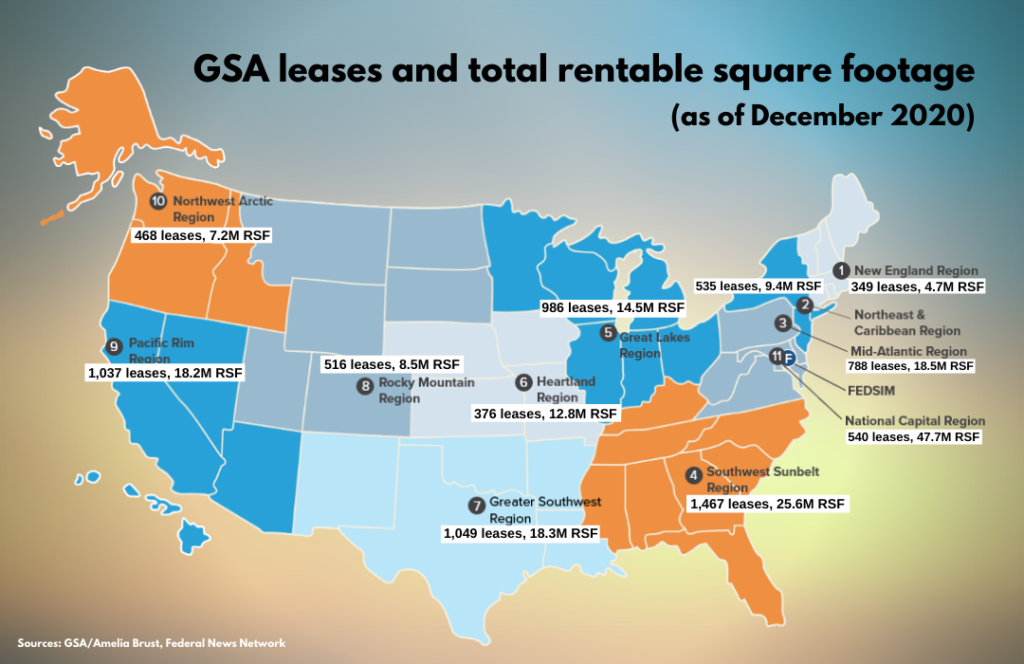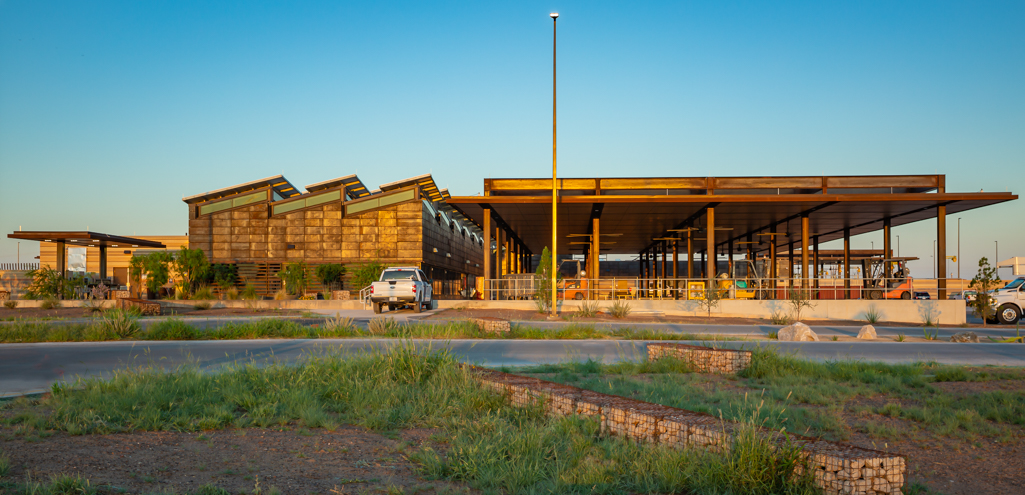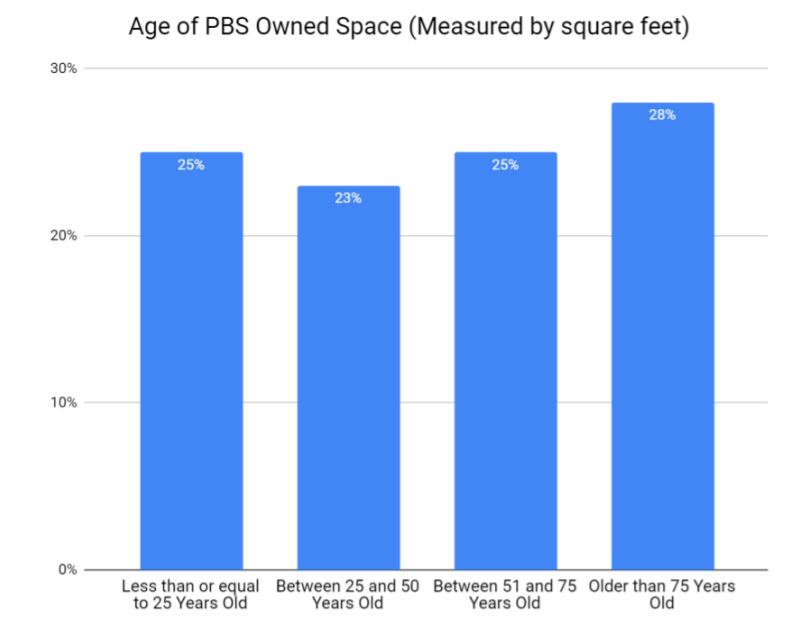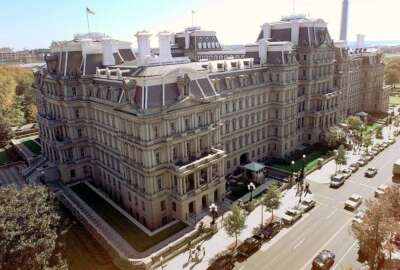

In part 2 of the special report, the federal government’s efforts to be more environmentally sustainable over the past two decades are not without success. But...
Even as the share of sustainable buildings in the federal government’s real estate portfolio rose over the last decade, investments in efficiency improvements declined. Now that the Biden administration has issued new mandates to use federal procurement power and asset management to address climate change, building efficiency could get renewed scrutiny this year.
Investments in facility efficiency improvements fell by nearly 75% between 2010 and 2019 while renewable electricity usage — which had been on the rise from 2010 to 2016 — declined steadily through 2019. Reductions in governmentwide building energy intensity stagnated over the last four years, which lawmakers have noticed.
Members of multiple climate, energy and oversight committees sent a letter on Jan. 26 to Comptroller General Gene Dodaro, asking the Government Accountability Office to investigate agency noncompliance with the Energy Independence and Security Act of 2007. The letter said that only 21% of buildings covered by the law underwent comprehensive energy and water evaluations, and only 12% are benchmarked.
This letter was sent one day before President Joe Biden signed a sweeping executive order on ambitious climate change initiatives, as Federal News Network found in part 1 of our special report, Building Back Greener. The EO includes directives to make federal real property more environmentally sustainable, but when GAO reported on federal green building standards in 2016 it found obstacles. The unique aspects of agencies’ building inventories, mission-related concerns, competing priorities, and criteria which raise construction costs all made it harder to comply with sustainability standards.
But the General Services Administration has an opportunity to reverse the years-long decline in building efficiency investment: Lease renewals are usually a good time to address these types of building sustainability improvements.
And in the federal government’s case, many of these renewals are just around the corner.
GSA said 60% of its leases held are set to expire between fiscal 2019 through 2023 – as of 2018. The agency expected about a third of Washington, D.C., leases to expire between 2019 and 2020. The National Capital Region is part of GSA Region 11, which has the most rentable square footage nationwide.
“There’s a lot coming up – that’s the punchline,” said Marcy Owens Test, senior vice president and member of the Federal Lessor Advisory Group at commercial real estate firm CBRE.

To know what real estate investments lie ahead, Test said it is always helpful to look at where the policy dollars are flowing in an administration. More money often means more leasing to carry out agency missions. During the Trump administration, the Executive Office for Immigration Review was among the most active in opening offices, she said. This time, Test advised keeping an eye on the Environmental Protection Agency, and the departments of Housing and Urban Development, Health and Human Services and Education.
“These projects often take years in the planning phase, they don’t usually happen overnight. So for an agency that may have shrunk in the last four years, it doesn’t mean that planning started during the last four years, it means that it happened before that time,” Test said during a webinar hosted by the National Federal Development Association on Feb. 2. “But we’ve seen many agencies, particularly over the last four or five years cut, be cut dramatically.”
It’s still worth watching what happens to the U.S. Citizenship and Immigration Service as the new administration considers a new direction on immigration, she added.
GSA determined that only about one-third — 32% — of its leased portfolio in 2019 was sustainable. Ten percent was not sustainable and 58% was not evaluated, according to the Federal Real Property Public Data Set, which tracks sustainability for owned federal building assets measuring at least 10,000 gross square feet (tracking for smaller or leased buildings is optional).
That said, agencies have managed to shrink their overall square footage, energy use and potable water use since 2007 while cumulative Leadership in Energy and Environmental Design (LEED) projects — to make buildings greener — increased from just one in 2001 to 174 in 2019. These included new building construction, existing building retrofits and interior design projects.
The most recent LEED-certified federal building was the Columbus U.S. Land Port of Entry in New Mexico, which earned a platinum rating — the highest possible.

But energy efficient renovations are expensive, and landlords have more incentive to spend the money if they know a tenant will be there for longer, said Dan Mathews, former Public Buildings Service commissioner at GSA under the Trump administration. That’s one reason he recommended GSA pursue long-term-term leases if it cares about environmental sustainability. Plus, tenants typically pay a premium for the flexibility to walk away from a lease, he said, something GSA rarely does.
As for how green building standards apply to federal leases in the near future, CBRE’s Test said it’s still not clear but an increased emphasis on Energy Star or LEED guidelines will likely impact big projects. Her firm is advising clients and incumbent landlords to consider these factors for upcoming tenant renewals.
Her colleague Brian Saal, CBRE senior vice president, said that historically, an aligned Congress, regardless of which political party is in power, brings increased regulation and legislation.
Speaking of political shifts, another hallmark of the Trump years not expected to continue under the Biden administration was relocating agencies outside the National Capital Region.
In his November outlook for federal real estate, NFDA board member and former commissioner of the Public Buildings Service Norman Dong said Biden is not likely to continue his predecessor’s pattern, but more efficient use of space would still be a goal for GSA. Dong was PBS commissioner during the Obama administration.
The agency is still downsizing where it can — three years ago the agency consolidated its underutilized National Capital Region office at 7th and D streets, N.W., into the main GSA headquarters building at 1800 F St., N.W. in D.C. Mathews said not enough people were reporting to the NCR building every day to justify holding onto both properties.
GSA then renovated the main HQ building to accommodate about 1,000 more people and the NCR office would get its own designated space. The variable making it all feasible, he said, was telework – something that many were skeptical of before the pandemic but which he predicts will only gain popularity going forward.
Then last month, GSA announced another D.C. consolidation.
The Education Department headquarters will shrink from three properties to two: The Potomac Center Plaza lease and the historic Lyndon Baines Johnson Federal Building. Renovations have begun for the LBJ building’s second and fifth floors, and Education plans to renovate “interior workspaces on the 3rd, 4th, 6th and 7th floors, updated and renovated restrooms with new, water efficient fixtures, LED lighting fixtures, and an upgraded building switchgear system. The project will aim to achieve LEED Silver Certification for Commercial Interiors.” GSA said in its announcement that the LBJ building could house approximately 600 more employees.

The shuttered NCR office was more than 80 years old, which is relatively aged for federal real estate but the portfolio is not exactly teeming with modern properties. Only a quarter of PBS-owned space is 25 years old or newer.
“As you re-position your real estate portfolio into a smaller portfolio — and it’s something that we were doing in the previous administration, we were largely trading quantity for quality. So we were going from older buildings to newer buildings, and smaller buildings, less square footage but newer facilities, so they were more energy efficient per foot as well,” Mathews said. “So you’re getting, improvements on both of those strategies: Newer, more energy efficient buildings, less energy per foot consumed, and a smaller footprint.”
In part 3 of Federal News Network’s special report Building Back Greener, we examine how post-pandemic telework usage can factor into federal green building initiatives. If you missed part 1, you can find it here.
Copyright © 2025 Federal News Network. All rights reserved. This website is not intended for users located within the European Economic Area.
Amelia Brust is a digital editor at Federal News Network.
Follow @abrustWFED


